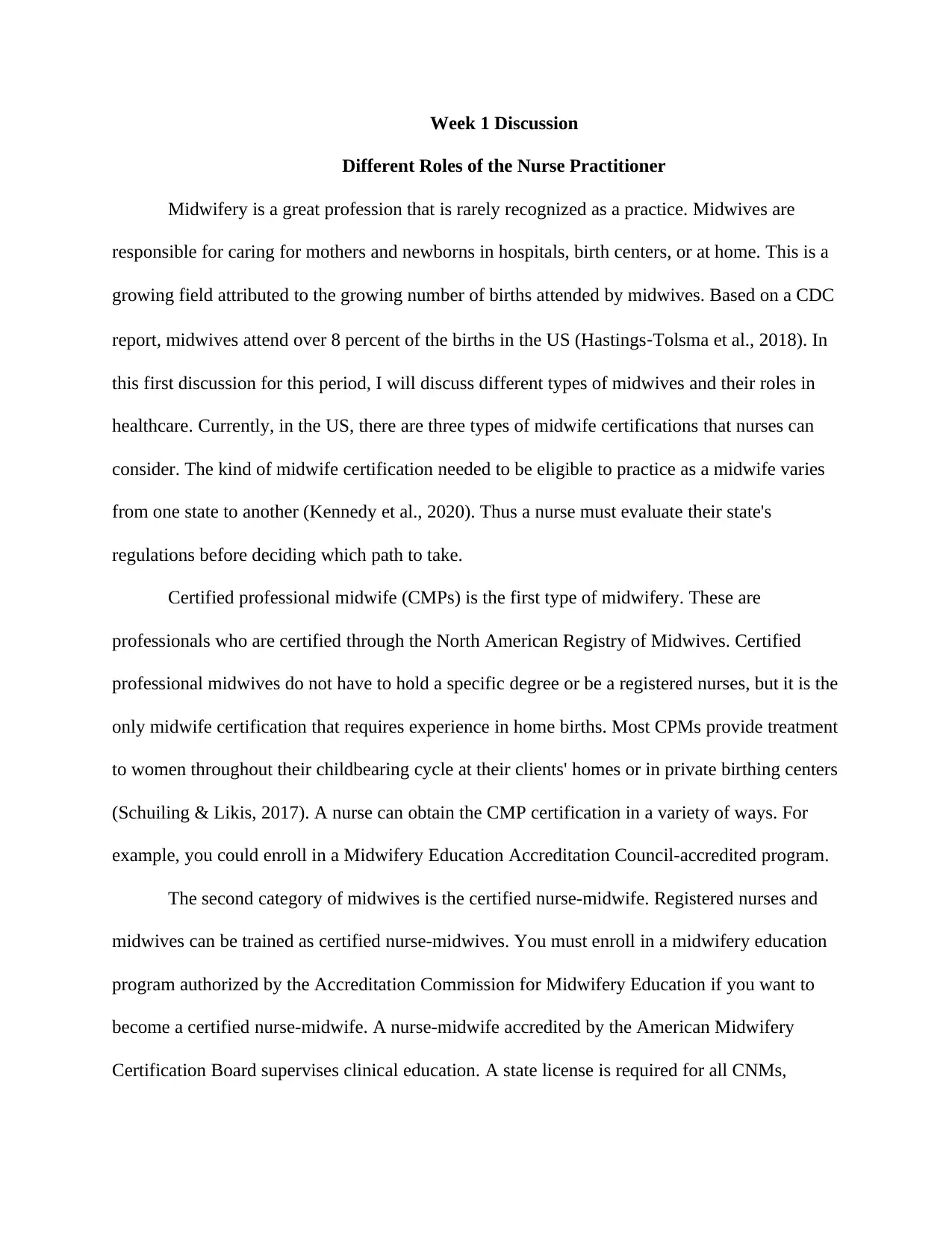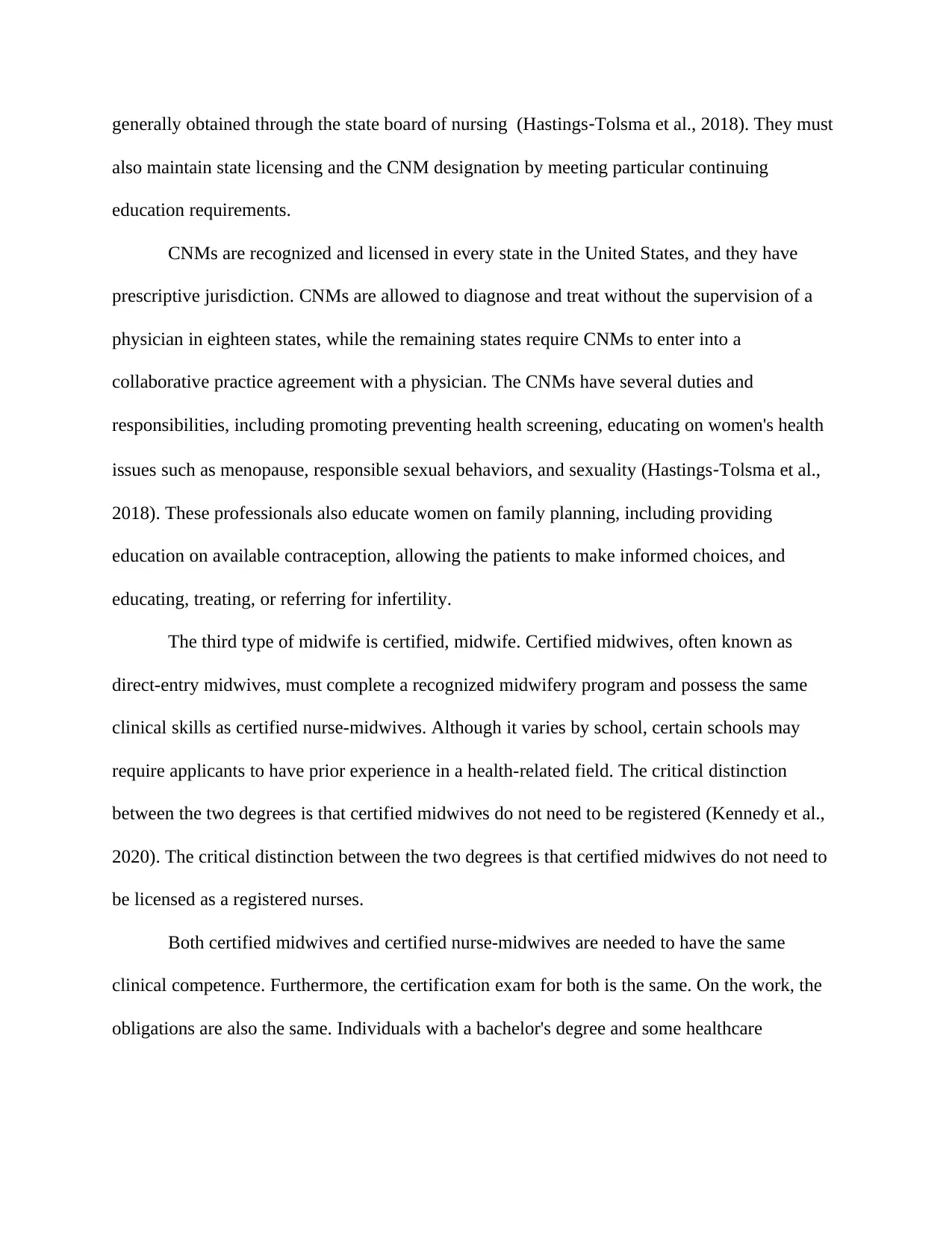Roles of Nurse Practitioners in Midwifery: Week 1 Discussion
VerifiedAdded on 2021/11/16
|3
|834
|92
Discussion Board Post
AI Summary
This discussion post examines the various roles of nurse practitioners in the field of midwifery. It distinguishes between three primary certifications: Certified Professional Midwives (CPMs), Certified Nurse-Midwives (CNMs), and Certified Midwives (CMs). CPMs often focus on home births and do not require a nursing degree, while CNMs are registered nurses with advanced training, licensed in all US states, and possess prescriptive authority. CMs, similar to CNMs in clinical skills, do not need to be registered nurses. The post highlights the responsibilities and educational pathways for each type of midwife, emphasizing their contributions to women's health, including prenatal care, family planning, and overall healthcare. References from reputable sources such as CDC reports and academic journals are included to support the information provided.
1 out of 3








![[object Object]](/_next/static/media/star-bottom.7253800d.svg)